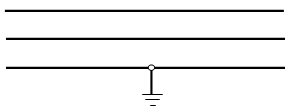Introduction
We all are familiar and encountered at least once the phenomenon of fault occurrence in electrical system. A power system failure across the town that happened due to a storm breakout or an internal equipment fault that disrupted your local power supply – these are all essentially the cases of faults in electrical systems.
Through this article let us try to examine this phenomenon in little more detail.
What is an Electrical Fault?
An Electrical System fault can be defined as a condition in the electrical system that causes failure of the electrical equipment in the circuit such as: Generators, Transformers, Busbars, Cables and all other equipments in the system that operate at given voltage level.
Principal Fault Types
By nature of electrical systems, at the basic level, electrical faults can be categorized as:
- Short-Circuit Faults: This is caused when there is a failure of insulation causing a short-circuit condition. This is by far the most common cause of failure.
- Open Circuit Faults: This fault occurs when a failure happens in the conduction path of electricity
Besides this, there could be combination (Simultaneous) fault situations as well and equipment level winding faults. We will not look in to them in detail over here.
Since Short-Circuit Faults are the most common causes of faults in Electrical distribution systems, let us study them in detail:
Short-circuit Faults
A short circuit fault occurs when there is an insulation failure between phase conductors or between phase conductor(s) and earth or both. An insulation failure results into formation of a short-circuit path that triggers a short-circuit conditions in the circuit (i.e. abnormally high current situations followed by visible effects like arcing, flashing).
Figure 1.0 below depicts a three phase-to-earth balanced fault condition:
Fig 1.0: Three Phase-to-Earth Balanced Fault Condition
Two other most common unbalanced fault conditions seen in a balanced three phase electrical system are:
- Phase-to-Phase fault: In this, only two of the three phases get short-circuited, causing an unbalanced fault condition in the system. Figure 2.0 below depicts this fault condition.
Fig 2.0: Phase-to-Phase unbalanced Fault Condition
- Single phase-to-earth fault: In this, one of the three phases get short-circuited with ground, causing an unbalanced fault condition in the system. Figure 3.0 below depicts this fault condition.
Fig 3.0: Single Phase-to-Earth unbalanced Fault Condition
Normally during operations, the fault situations may be dynamic and change the fault types rapidly based on local conditions. (e.g. a single phase-to-earth fault may in turn change to a two phase-to-earth fault)
Conclusion
A fault’s severity and magnitude depends on variety of factors like the location of fault in the electrical system, damage caused due to fault. While analyzing a given fault’s severity, it is a usual practice to refer to a standard fault condition (three phase fault) for given voltage level.
A three phase fault is considered as the most severe fault that can occur in the system and hence its short-circuit ratings are used while determining the required switchgear system. Besides this, a single phase-to-earth fault current ratings are also considered in short-circuit calculations.



how would i convert 12v dc to get 240v?
You need a dc to ac converter, then from there you need step up transformer say 1:20
1) How do you define an ‘Earth Fault’ in a simplest way?
2) What is the principles of earth fault protection?
3) What is the main purpose of of earth fault protection?